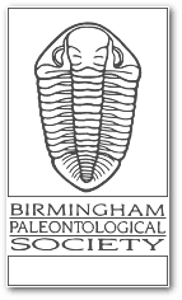Paleo in the News
Axolotls seem to pause their biological clocks and stop ageing
In most vertebrates, a pattern of chemical marks on the genome is a reliable indicator of age, but in axolotls this clock seems to stop after the first four years of life
Categories: Fossils
Octopuses and fish hunt as a team to catch more prey
An octopus will work with several different species of fish to find and catch prey - and punch those that aren't helping
Categories: Fossils
Scientists turn to human skeletons to explore origins of horseback riding
A new, wide-ranging exploration of human remains casts doubt on a long-standing theory in archaeology known as the Kurgan hypothesis -- which, among other claims, suggests that humans first domesticated horses as early as the fourth millennium B.C.
Categories: Fossils
Over nearly half a billion years, Earth's global temperature has changed drastically, driven by carbon dioxide
A new study offers the most detailed glimpse yet into how Earth's surface temperature has changed over the past 485 million years. The data show that Earth has been and can be warmer than today -- but humans and animals cannot adapt fast enough to keep up with human-caused climate change.
Categories: Fossils
Over nearly half a billion years, Earth's global temperature has changed drastically, driven by carbon dioxide
A new study offers the most detailed glimpse yet into how Earth's surface temperature has changed over the past 485 million years. The data show that Earth has been and can be warmer than today -- but humans and animals cannot adapt fast enough to keep up with human-caused climate change.
Categories: Fossils
Insights into South African population history from 10,000-year-old human DNA
Ancient DNA has provided spectacular insights into human history, particularly in Europe and Asia, where researchers have reconstructed the genomes of thousands of people. However, fewer than two dozen ancient genomes have been recovered from southern Africa -- specifically Botswana, South Africa and Zambia -- which has some of the world's earliest evidence of modern humans, with the oldest genomes dating back around 2,000 years.
Categories: Fossils
Giant rats trained to sniff out illegal wildlife trade
African giant pouched rats proved adept at detecting four commonly trafficked products derived from endangered species including rhino horn and elephant ivory
Categories: Fossils
The cactus family’s surprising evolutionary journey
We are finally untangling the ancient history of the cactus family, revealing some surprising forces that shaped these plants – and prompting concern for their future
Categories: Fossils
Rugged Falklands landscape was once a lush rainforest
A researcher has found evidence that the treeless, rugged, grassland landscape of the Falkland Islands was home to a lush, diverse rainforest up to 30 million years ago.
Categories: Fossils
Explaining dramatic planet-wide changes after world's last 'Snowball Earth' event
Some of the most dramatic climatic events in our planet's history are 'Snowball Earth' events that happened hundreds of millions of years ago, when almost the entire planet was encased in ice up to 0.6 miles thick. New research provides a more complete picture for how the last Snowball Earth event ended, and suggests why it preceded a dramatic expansion of life on Earth, including the emergence of the first animals.
Categories: Fossils
South African rock art possibly inspired by long-extinct species
A mysterious tusked animal depicted in South African rock art might portray an ancient species preserved as fossils in the same region, according to a new study.
Categories: Fossils
South African rock art possibly inspired by long-extinct species
A mysterious tusked animal depicted in South African rock art might portray an ancient species preserved as fossils in the same region, according to a new study.
Categories: Fossils
Is it really cheaper to cultivate your own fruit and vegetables?
Our gardening columnist James Wong isn’t convinced, and does the maths to get some answers
Categories: Fossils
Early dingoes are related to dogs from New Guinea and East Asia
New archaeological research has discovered for the first time clear links between fossils of the iconic Australian dingo, and dogs from East Asia and New Guinea.
Categories: Fossils
Early dingoes are related to dogs from New Guinea and East Asia
New archaeological research has discovered for the first time clear links between fossils of the iconic Australian dingo, and dogs from East Asia and New Guinea.
Categories: Fossils
Air jacket helps 'scuba-diving' lizards stay underwater for longer
Some lizards dive into streams to escape predators, and a specialised bubble-breathing technique enables them to stay submerged for up to 18 minutes
Categories: Fossils
Some flowers may have evolved long stems to be better ‘seen’ by bats
Echolocating bats can more easily find and pollinate long-stemmed flowers that stand out from the surrounding foliage, which may be why this floral trait evolved
Categories: Fossils
Genomics reveals sled dogs' Siberian lineage
New research examines thousands of years of Arctic sled dog ancestry and reveals when and how Siberian and Alaskan sled dogs' DNA mixed.
Categories: Fossils
Tiny chameleon spotted by tourists in Madagascar is new to science
A species of leaf chameleon newly named Brookesia nofy was discovered in a patch of coastal rainforest, a highly threatened habitat in Madagascar
Categories: Fossils
Antidote to deadly pesticides boosts bee survival
Feeding bees edible bits of hydrogel increases their odds of surviving pesticide exposure by 30 per cent
Categories: Fossils
